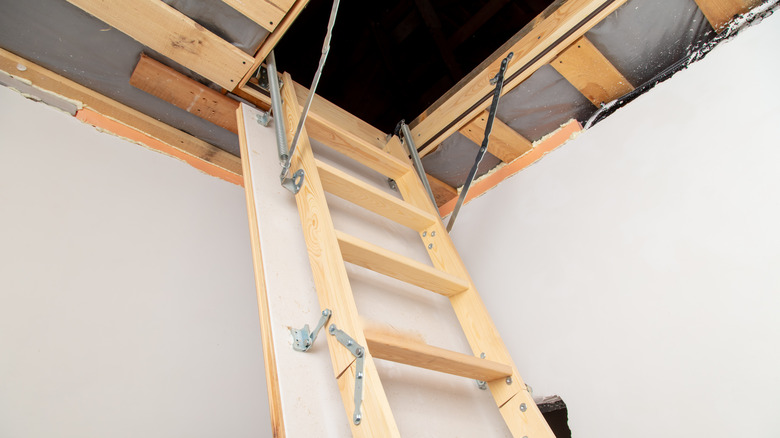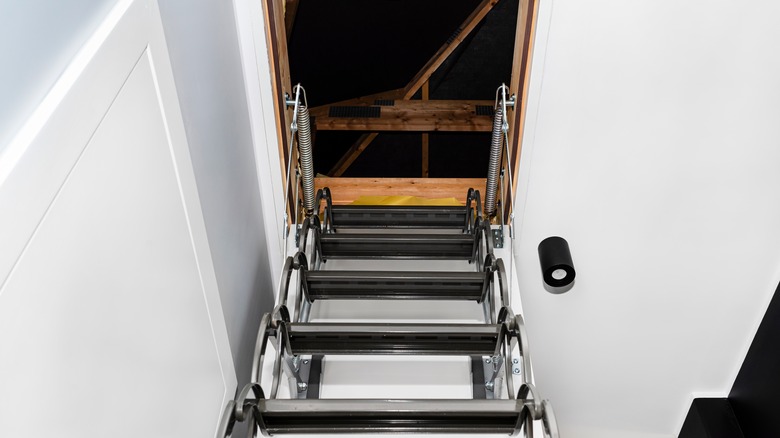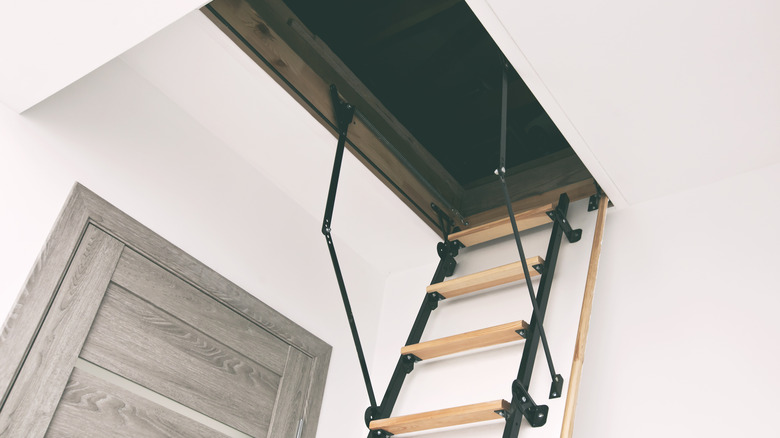What To Consider Before Buying A New Attic Ladder
An attic is a valuable asset to a home that can be utilized in a number of ways by owners. But how valuable is the space if the home's residents cannot access it? Choosing a safe and durable attic ladder is crucial for homeowners wanting to get the greatest use out of this additional space. And you should consider your home's dimensions and the local building codes when doing so.
Attics are less common in new construction homes when compared to older models, and those that do come with attic spaces may not be built sturdy enough for habitation or uses other than additional storage. Newer construction with attics also might not come with a pre-installed ladder to access the area. Nevertheless, adding one can make transforming your attic space simple, ease inspecting the underside of your roof for leaks and damage, and can potentially increase the property value of your home.
Costing anywhere from $200 to over $1,500, constructing a properly functioning ladder can also be expensive and certainly isn't a job designed for one person. Whether you're simply replacing an old ladder in your home or installing an attic for the first time, there are many factors to consider when selecting the right model for you and your family.
The dimensions of your home and attic
Before buying materials and starting the installation process, it's critical to know the measurements of the spaces in and around your attic to make sure residents can enter and exit the area safely. One of the most important dimensions to measure correctly in your home is the ceiling height for the room directly below the attic, as this measurement is needed to determine the proper length of the ladder. An attic ladder that is safe to use should reach the floor of the lower story of your house rather than dangle in mid-air. Other measurements to note are the opening size of the attic door and the ladder's swing clearance, which is the width of space your attic ladder requires to release from its shuttered form and open to its full size.
Weight is another element that homeowners may overlook when choosing a ladder. However, it's essential to ensure that your attic ladder will be sturdy enough to support you and your home's other residents as you climb in and out of the space. Ladder models come with listed weight capacities that aren't meant to be exceeded, or else you make yourself and others susceptible to injury. Ladders with higher weight capacities may cost more than those with lower ones since they're built to withstand more pressure.
Building codes
No matter where you live in the country, your local government enforces its own building codes that ensure the safety of those living and working inside commercial and residential spaces. These codes are often particular, covering everything from foundation waterproofing requirements to chimney specifications. Almost every U.S. state follows the guidelines specified within the International Residential Code (IRC), which doesn't cover attic ladders but offers general regulations pertaining to attic access. The IRC states that attic openings are permitted for spaces measuring at least 30 inches in height or 30 square feet in area, and attic openings also should measure at least 22 inches by 30 inches.
While local and state governments use federal regulations as a basic template, both can make adjustments as lawmakers see fit, making it necessary for homeowners to ensure their plans are up to code before making irreversible modifications to their houses. Violating codes can result in a monetary fine and a complete forgoing of the construction project.
Where you live can also help determine the type of material you should choose for your ladder — or, more specifically, the climate. To prevent early onset damage and ensure your new ladder will remain sturdy for as long as possible, those built from wood are ill-advised for homes in wetter, humid climates. If you live in a region that sees high humidity levels each year, opt for a steel or aluminum model instead.


